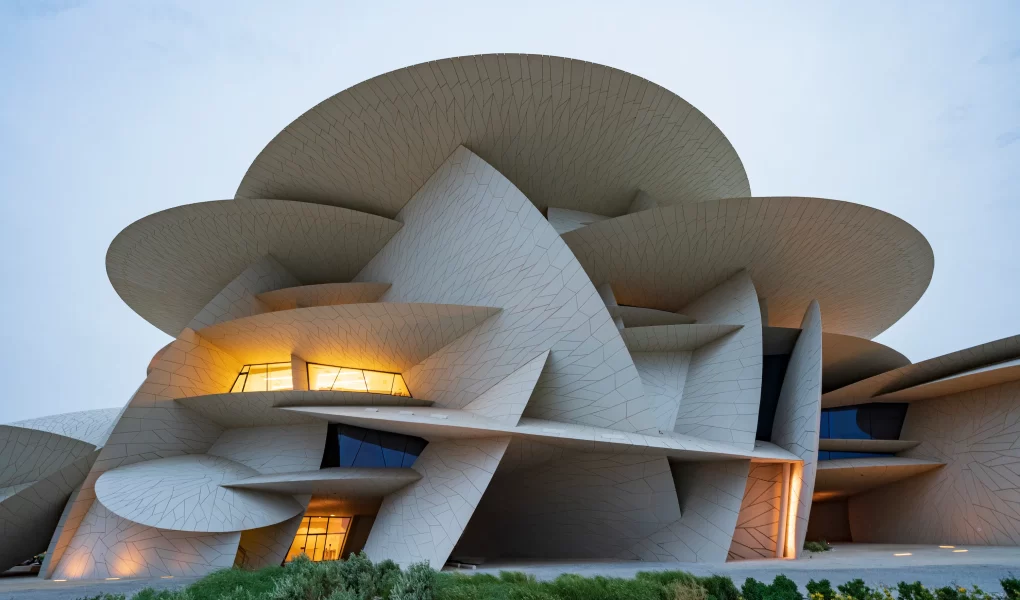Welcome to the world of contemporary architecture, where innovation and creativity collide! In this ever-evolving field, architects push boundaries, redefine spaces, and challenge traditional norms. Contemporary architecture is not just about constructing buildings; it’s a dynamic expression of our modern society. With its sleek lines, bold designs, and cutting-edge technology, contemporary architecture has transformed skylines around the globe. We will delve into the key characteristics of contemporary architecture and explore its evolution over time. We’ll also spotlight influential architects who have shaped this architectural movement. Furthermore, we’ll examine how technology and sustainability play vital roles in shaping modern-day structures.
Critical Characteristics of Contemporary Architecture
Contemporary architecture, also known as modern architecture, is characterized by several key elements that set it apart from other architectural styles. One of the main characteristics of contemporary architecture is its emphasis on simplicity and minimalism. Clean lines, open spaces, and a focus on functionality are hallmarks of this style. Contemporary architecture often incorporates innovative materials and technologies. Architects in this field are constantly pushing boundaries and experimenting with new ways to create visually stunning and environmentally sustainable structures.
Evolution of Contemporary Architecture
One significant aspect is the shift towards minimalism and simplicity. In earlier times, architectural styles were often ornate and extravagant, but contemporary architecture embraced clean lines, open spaces, and minimalist design principles. This emphasis on simplicity allows for a more functional approach to space utilization. Another notable evolution is the integration of technology into architectural design. As technological advancements continue to revolutionize our lives, architects have found innovative ways to incorporate them into their designs.
Influential Architects in the Development of Contemporary Architecture
One such architect is Zaha Hadid, whose bold and organic designs have earned her global recognition. Her innovative approach to form and structure has resulted in iconic structures like the Heydar Aliyev Center in Baku and the Guangzhou Opera House. Hadid’s groundbreaking work has inspired a new generation of architects to think outside the box. Another influential figure is Frank Gehry, known for his deconstructivist style that embraces irregular shapes and unconventional materials. His masterpiece, the Guggenheim Museum Bilbao, revolutionized contemporary architecture with its curvaceous titanium exterior and dynamic interior spaces. Renzo Piano is another notable architect who has left an indelible mark on contemporary architecture. From The Shard in London to Centre Pompidou in Paris, Piano’s designs are characterized by their elegance, functionality, and integration with their surroundings.
The Use of Technology and Sustainability in Contemporary Architecture
One key aspect is the integration of intelligent systems into buildings. Technology enables structures to be more efficient and user-friendly, from automated lighting and temperature control to advanced security features. These advancements enhance comfort and reduce energy consumption, contributing to sustainability. Another way technology impacts contemporary architecture is through material innovation. Architects now access a wide range of eco-friendly materials promoting sustainable construction practices. For instance, recycled materials such as reclaimed wood or repurposed steel can be used creatively in building design. Renewable energy sources are increasingly incorporated into architectural projects. Solar panels integrated into facades or rooftops provide clean energy while reducing reliance on traditional power grids.
Examples of Iconic Contemporary Buildings
One such iconic building is the Guggenheim Museum Bilbao in Spain. Designed by renowned architect Frank Gehry, this titanium-clad masterpiece is characterized by its organic forms and flowing curves. The museum’s unique shape has become an instantly recognizable symbol of modern architecture. Another notable example is the Burj Khalifa in Dubai, currently the tallest building in the world. Standing at a staggering height of 828 meters, this sleek skyscraper designed by Adrian Smith combines cutting-edge engineering with elegant aesthetics. Its exterior features a striking pattern inspired by Islamic geometric motifs.
Criticism and Controversies Surrounding Contemporary Architecture
One common criticism is that contemporary architecture often prioritizes aesthetics over functionality. Critics argue that some buildings prioritize form over practicality, resulting in complex spaces or needing more essential amenities. Additionally, incorporating unconventional materials and designs can sometimes lead to maintenance challenges or structural issues. Another controversy surrounding contemporary architecture stems from its departure from traditional design principles. Some argue that these modern structures clash with their surroundings and disrupt the urban fabric. This clash between old and new can be seen as a threat to cultural heritage and architectural continuity. There needs to be more debate about the sustainability of contemporary buildings. While many architects strive for eco-friendly designs by incorporating green technologies into their projects, others wonder whether these efforts are enough to counterbalance the environmental impact caused by large-scale construction.





